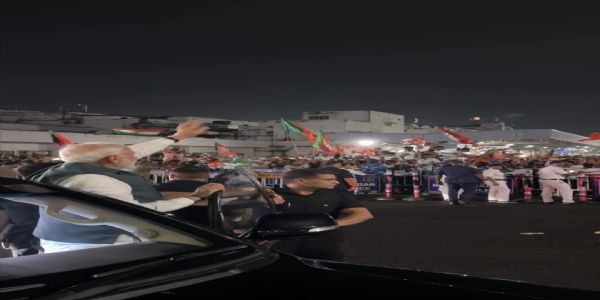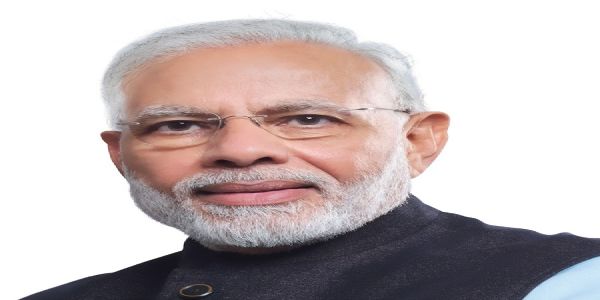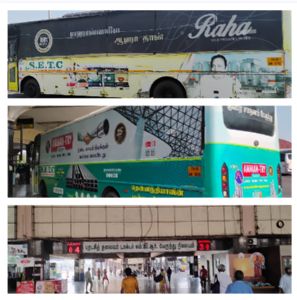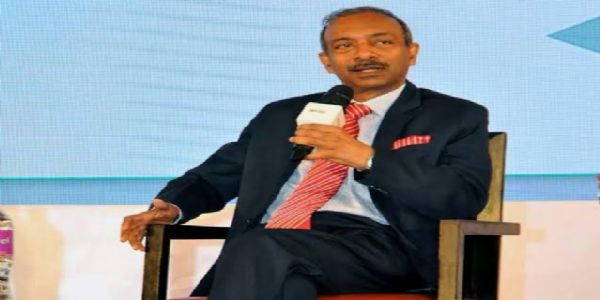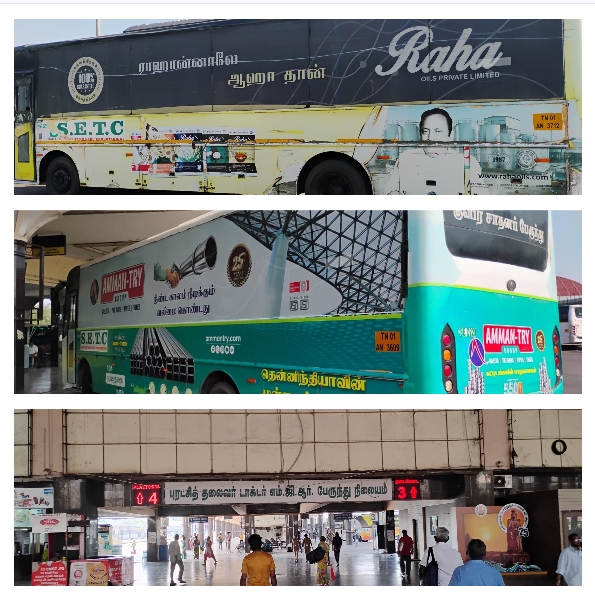
Delhi/Chennai, September 13 (HS): In an alarming development underscoring public safety concerns, the Madras High Court has taken cognizance of the blatant violation of a Supreme Court ruling by the Tamil Nadu State Transport Corporation (TNSTC). Buses in Tamil Nadu have increasingly been used as moving billboards, with full-body vinyl advertisements not only covering the vehicle exteriors but also encroaching upon windows and windshields—contravening the highest judicial authority in the land.
Supreme Court Judgment: Absolute Clarity on Visual Light Transmission
In a pivotal ruling on May 4, 2012, in the case of Avishek Goenka vs. Union of India, the Supreme Court issued a firm prohibition on the application of black films or any materials that reduce the Visual Light Transmission (VLT) of vehicle safety glass. The Court directed that:
-
Windscreens (both front and rear) must maintain a minimum of 70% VLT, and
-
Side windows must retain at least 50% VLT.
This judgment was driven by pressing public safety concerns:
-
Dark films severely hinder police surveillance, enabling criminals to commit heinous offenses like kidnapping, sexual assault, and dacoity without detection.
-
They drastically reduce driver visibility, leading to a significantly higher risk of road accidents.
The Supreme Court made it unequivocally clear: No individual, manufacturer, or state authority is permitted to apply additional films or materials that diminish VLT beyond prescribed limits.
TNSTC’s Flagrant Defiance of Supreme Court Directive
Despite this clear and binding judicial mandate, the TN State Transport Corporation continues to allow full-body advertisements that obscure windows and even windshields of public buses. This is a direct contravention of the Supreme Court judgment and Rule 100 of the Motor Vehicles Act, which mandates stringent VLT requirements.
The ramifications of this irresponsible practice are severe:
-
Commuters, particularly women, children, and elderly passengers, are forced to endure discomfort and insecurity as their view of the outside world is entirely blocked.
-
Drivers are left with impaired visibility, especially in low-light or poor weather conditions, dramatically increasing the risk of accidents.
-
The opacity created by such ads hampers police monitoring during road checks, inadvertently shielding criminals.
Judiciary Steps In: High Court’s Crucial Intervention
Acknowledging the serious threat to public safety, the Madras High Court has intervened by demanding a detailed action taken report (ATR) from the state transport authorities. This reflects the judiciary’s firm resolve to ensure the enforcement of the Supreme Court’s directive and the safety of passengers.
Should the High Court’s order be implemented in full, the TNSTC will have to:
-
Immediately remove advertisements covering windows and windshields.
-
Restrict commercial ads exclusively to body panels that do not obstruct glass surfaces.
-
Explore alternative revenue-generating avenues, such as digital display screens inside buses or creative ad placements (e.g., roof-mounted ads, rear panels, bus shelters).
A Nationwide Implication
This is not a Tamil Nadu-specific problem. Across India—from Delhi to Mumbai, Bengaluru to Kolkata—many transport corporations continue the unsafe practice of allowing obstructive ads on vehicles. The Supreme Court judgment stands as a nationwide precedent, making it clear that no advertisements or films must compromise public safety under the guise of commercial gain.
Public Safety Must Reign Supreme
The Supreme Court has consistently emphasized that no economic benefit or individual convenience can override the constitutional right to life and a safe environment as enshrined in Article 21 of the Indian Constitution. The TNSTC’s deliberate violation serves as a stark reminder that public transport exists to serve the public, not corporate advertisers.
The Madras High Court’s decisive action must now serve as a powerful precedent, compelling all state transport corporations to comply strictly with the Supreme Court’s binding mandate.
Ensuring that buses remain safe spaces—with clear, unobstructed windows and windshields—is a constitutional and moral obligation.





